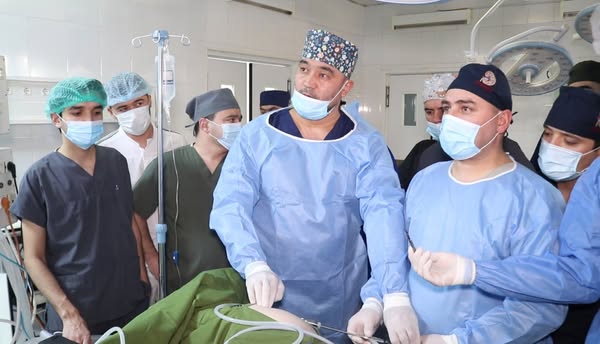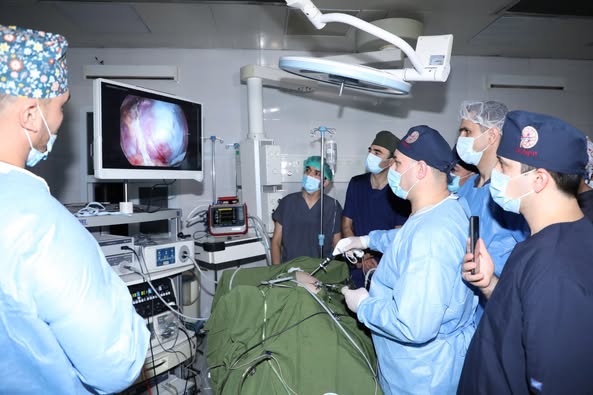The Istiklol Medical Center in Dushanbe has begun performing laparoscopic surgeries, which were previously carried out using large incisions. Modern technologies now enable complex surgeries without major cuts, significantly speeding up patient recovery, according to Tajikistan’s Ministry of Health.
Doctors at Istiklol underwent laparoscopic surgery training in Uzbekistan, allowing them to introduce these advanced surgical methods in Tajikistan. As a result, patients can now receive treatment without the need to travel abroad.
Karimjon Sayyodov, a candidate of medical sciences and a surgeon at the hospital who collaborated with Uzbek specialists to implement the new techniques, explained that this method enables operations on organs such as the prostate without large incisions, greatly reducing recovery time.
"The introduction of laparoscopic surgery allows patients to recover faster and return to their normal lives. Just 2–3 days after surgery, patients can be discharged home. Previously, these procedures required large incisions, which not only caused greater tissue damage but also extended the rehabilitation period," Sayyodov noted.
In 2024, 94 innovations in diagnostics and treatment were introduced in Tajikistan, significantly improving the quality of medical services in the country.

Among these advancements are new methods for diagnosing oncological diseases, surgeries on the digestive system, cardiovascular and X-ray endovascular surgery, as well as procedures for treating respiratory and hearing disorders.
Earlier, doctors at Tajikistan’s National Medical Center Shifobakhsh in Dushanbe, in collaboration with specialists from the Dastai Dil Diagnostic and Treatment Center, performed the country's first complex endovascular brain surgery.
For the operation, which involved a patient with skull and brain damage, doctors used an endovascular approach—without incisions and with minimal tissue damage. The surgery successfully addressed a venous brain injury that was causing swelling (which could have led to blindness) and bleeding from the nose and mouth.
The patient's condition after the operation is stable, and all pre-surgery complaints have been fully resolved.







